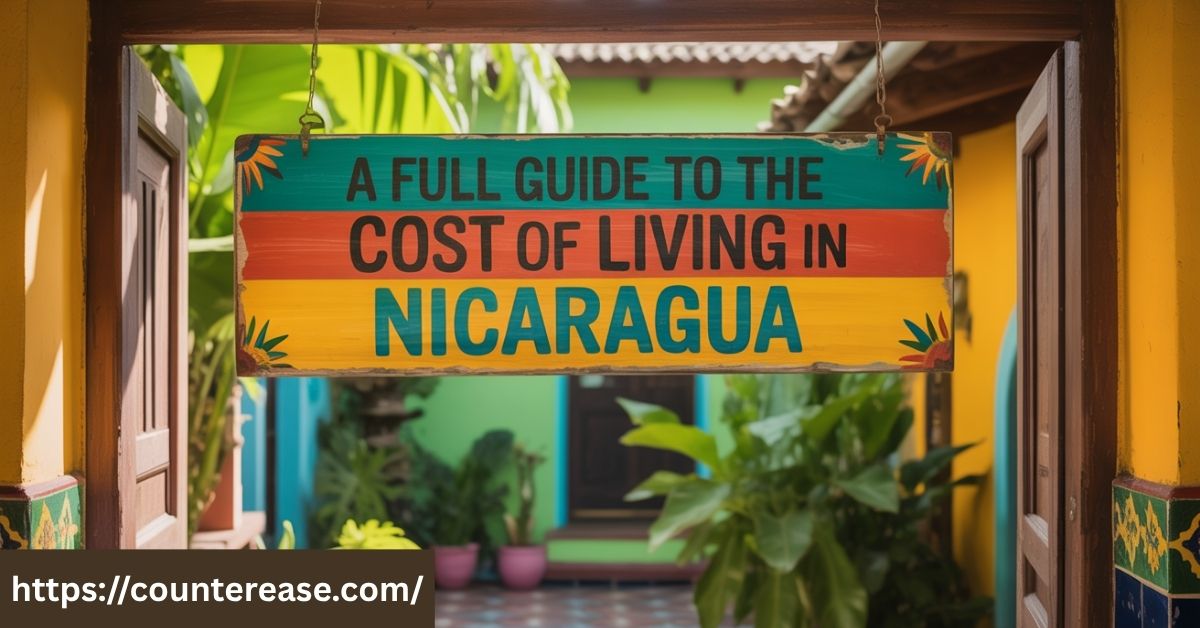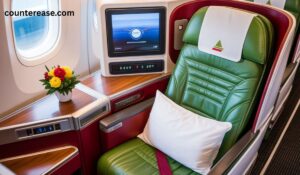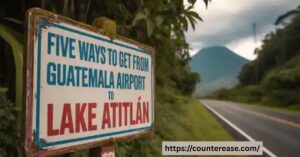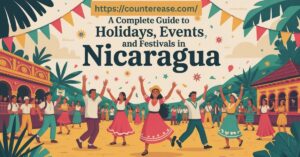The cost-of-living-guide-nicaragua offers a complete overview of how much money you need to live comfortably in this Central American country. It includes real-life prices for rent, food, transport, healthcare, and daily expenses. This guide is essential for travelers, digital nomads, expats, or retirees planning to enjoy a simple, affordable lifestyle in Nicaragua’s vibrant towns and peaceful beaches.
Nicaragua has become one of the most attractive low-cost destinations in the Americas. Imagine sipping coffee on a colonial balcony in Granada or enjoying ocean views in San Juan del Sur—all while spending less than half of what you’d need in the U.S. or Europe. This country blends budget living with cultural richness, natural beauty, and friendly locals, making it a dream for many.
This cost-of-living-guide-nicaragua highlights key differences in expenses between cities, helps with budgeting tips, and reveals how your lifestyle choices can stretch your money. From cheap public buses to fresh market produce, Nicaragua’s affordability stands out.
Nicaragua Living Costs 2025: The Real Story Behind Central America’s Hidden Gem
Nicaragua sits like a diamond in the rough among Central American destinations. While Costa Rica and Panama grab headlines with their polished tourism campaigns, savvy expats quietly build incredible lifestyles in Nicaragua for half the cost.

This isn’t another sugar-coated expat guide. You’ll get real numbers, honest assessments, and insider knowledge that other guides won’t share. Nicaragua offers remarkable value, but it comes with trade-offs you need to understand before making the leap.
See Also: A Full Guide to the Cost of Living in Chile
Why Smart Expats Choose Nicaragua Over Costa Rica and Panama
Nicaragua’s cost of living advantage stems from economic factors that create genuine bargains for foreign residents. The country operates on a dual currency system – both córdobas and USD work everywhere, eliminating exchange rate headaches that plague other destinations.
Property ownership laws favor foreigners more than neighboring countries. You can actually own beachfront property outright, unlike Costa Rica’s restrictive maritime zone regulations. This creates investment opportunities that don’t exist elsewhere in the region.
The territorial tax system protects foreign-sourced income from local taxation. If you earn money outside Nicaragua, you don’t pay Nicaraguan taxes on it. That’s a huge advantage for remote workers and retirees with foreign pensions.
However, let’s address the elephant in the room. Political stability remains a concern following 2018’s civil unrest. The situation has stabilized, but it affects tourism and keeps costs artificially low. Smart expats monitor developments while enjoying the benefits of reduced competition for housing and services.
Infrastructure reality varies dramatically by location. Managua offers decent internet and reliable power. Rural beach towns struggle with both. Leon and Granada fall somewhere between. You’ll need backup plans for power outages and slow internet days.
Real Monthly Budgets: Three Expat Lifestyles Dissected
Expat cost of living Nicaragua varies enormously based on lifestyle choices and location selection. Here’s what actual residents spend:
Bare-Bones Survival: $500-700/month
This expat monthly budget Nicaragua covers absolute essentials:
| Expense Category | Monthly Cost (USD) | Details |
|---|---|---|
| Shared accommodation | $150-250 | Hostel dorm or shared house |
| Local food only | $120-180 | Markets, comedores, home cooking |
| Local transportation | $20-35 | Chicken buses, walking |
| Basic utilities | $30-50 | Shared electricity, water |
| Cell phone | $10-20 | Prepaid local plan |
| Personal items | $50-80 | Soap, toiletries, basics |
| Emergency fund | $50-100 | Medical, unexpected costs |
| Total | $430-715 | Bare minimum survival |
This budget requires significant lifestyle adjustments. You’ll eat where locals eat, travel like locals travel, and live in basic accommodations. It’s doable but demanding.
Comfortable Middle-Class: $1,000-1,500/month
This range provides a lifestyle similar to Nicaragua’s emerging middle class:
- Private apartment in decent neighborhood
- Mix of home cooking and restaurant meals
- Reliable internet for remote work
- Occasional taxi rides and weekend trips
- Basic healthcare coverage
- Some entertainment and social activities
Luxury Expat Lifestyle: $2,000-3,000/month
Premium living includes:
- High-end rental with modern amenities
- Regular fine dining and imported goods
- Private transportation or frequent taxis
- Premium healthcare and dental care
- Active social life and travel within Central America
City-by-City Cost Variations
1.Rent Managua typically runs 15-25% higher than other cities due to business demand and better infrastructure.
2.Rent Granada commands tourist premiums in colonial zones but offers authentic neighborhoods at local prices.
3.Rent San Juan del Sur fluctuates wildly with surfing seasons – expect 40-60% higher costs during peak periods.
León provides the best value for students and culture seekers, with university town economics keeping costs reasonable.
Housing Reality: From Colonial Mansions to Beach Shacks
Accommodation costs Nicaragua represent your largest expense category. Understanding the rental market prevents costly mistakes and opens opportunities for exceptional value.
Rental Market Deep Dive
Long-term rentals offer significant savings over tourist pricing:
Studio apartment rent ranges:
- Budget studios: $200-350 in local neighborhoods
- Mid-range studios: $350-500 with modern amenities
- Premium studios: $500-750 in expat-friendly areas
1-bedroom apartment rent varies by location and quality:
- Local neighborhoods: $300-500
- Expat areas: $500-800
- Luxury developments: $800-1,200
3-bedroom house rent opens family living options:
- Basic houses: $400-700 in residential areas
- Modern houses: $700-1,200 with amenities
- Luxury houses: $1,200-2,500 with pools, security
Hidden Rental Costs
Smart renters budget for expenses beyond base rent:
- Security deposits: Usually 1-2 months rent
- Utility connections: $50-150 for electricity, water setup
- Internet installation: $75-125 depending on provider
- Property management: 10-15% if using rental agents
Furnished vs unfurnished decision affects budgets significantly:
Furnished rentals cost 25-40% more monthly but eliminate furniture purchasing. Unfurnished rentals require $1,000-3,000 upfront investment but offer long-term savings.
Neighborhood Price Mapping
Granada’s colonial center commands premium prices but offers walkability and tourist infrastructure. Local Granada neighborhoods provide authentic experiences at 40-50% discounts.
San Juan del Sur beachfront properties cost 3-4 times inland alternatives. However, walking distance to beaches justifies premiums for many expats.
León’s university districts offer vibrant nightlife and cultural activities at student-friendly prices.
Food Economics: Gallo Pinto to Gourmet Dining
Food and grocery expenses offer incredible value when you understand the local system. Strategic choices stretch budgets while maintaining excellent nutrition.
Local Market Mastery
Shopping at local markets delivers dramatic savings over supermarkets:
| Item | Supermarket (USD) | Local Market (USD) | Savings |
|---|---|---|---|
| Rice (5 lbs) | $3.50 | $2.25 | 36% |
| Beans (2 lbs) | $2.25 | $1.50 | 33% |
| Bananas (10) | $1.50 | $0.75 | 50% |
| Chicken (2 lbs) | $4.50 | $3.25 | 28% |
| Tomatoes (2 lbs) | $2.00 | $1.25 | 38% |
Local market vendors often negotiate prices, especially for bulk purchases or regular customers. Building relationships leads to better deals and quality selections.
Restaurant Tier Breakdown
Street food snack costs provide incredible value:
- Nacatamales: $1-2 each, massive traditional steamed parcels
- Quesillo: $0.75-1.25, cheese-filled tortillas with sour cream
- Fritanga plates: $2-4, grilled meat with rice, beans, plantains
Local restaurant meals at comedores offer complete lunches for $2-4. These family-run establishments serve authentic food at prices locals can afford.
Mid-range restaurant pricing in expat areas:
- Breakfast: $4-8 with coffee and fresh juice
- Lunch: $6-12 for quality international cuisine
- Dinner: $8-18 depending on location and ambiance
High-end dining costs in tourist zones can shock budget-conscious travelers:
- Fine dining: $25-45 per person
- Wine markups: 200-300% over retail prices
- Import surcharges: Premium ingredients command premium prices
Cooking at Home Economics
Food cost weekly for home cooking varies by shopping strategies:
Basic weekly groceries for one person: $15-25 Comfortable weekly groceries: $25-40
Premium ingredients weekly: $40-65
Dining out affordability depends heavily on venue selection. Eating like locals keeps costs minimal. Seeking familiar international foods increases expenses dramatically.
Getting Around Nicaragua: Transportation Cost Reality
Transportation costs Nicaragua remain remarkably low, though comfort levels vary significantly across options.
Chicken Bus Culture
Bus fare per trip offers unbeatable value:
- Local city buses: $0.25-0.50
- Intercity routes: $1-5 depending on distance
- Express services: $3-8 with air conditioning and comfort
Chicken buses connect virtually every destination in Nicaragua. They’re crowded, hot, and sometimes dangerous, but they’re authentic and incredibly cheap.
Private Transport Options
Taxi rates per km vary by city and negotiation skills:
- Short city rides: $2-5
- Longer distances: $0.50-1.00 per kilometer
- Airport transfers: $15-25 depending on destination
Uber operates in Managua with rates roughly 20% below traditional taxis. Other cities rely on traditional taxi services or motorcycle taxis.
Monthly fuel costs for car ownership:
- Small car: $60-100 monthly
- Mid-size vehicle: $100-150 monthly
- Large SUV: $150-250 monthly
Motorcycle Ownership
Motorcycles dominate Nicaraguan transportation. Purchase prices start around $800 for used bikes, $2,000-4,000 for new ones.
Insurance and registration cost $50-150 annually. Maintenance remains cheap with abundant repair shops and affordable parts.
However, motorcycle safety presents serious concerns. Roads lack proper shoulders, drivers operate unpredictably, and medical facilities may be distant.
Digital Infrastructure and Utilities: The Connectivity Challenge
Utilities electricity water internet costs remain reasonable, but reliability varies significantly by location.
Internet Speed Reality
Cost of high-speed internet depends on provider and location:
| Provider | Speed | Monthly Cost | Reliability |
|---|---|---|---|
| Claro | 10-50 Mbps | $25-45 | Good in cities |
| Movistar | 15-100 Mbps | $30-60 | Best overall |
| Yota | 5-25 Mbps | $20-35 | Budget option |
Rural areas often lack fiber connections. Satellite internet provides backup but costs $60-120 monthly with data caps.
Power Grid Reliability
Electricity costs average $0.15-0.25 per kWh, reasonable by regional standards. However, power outages occur regularly, especially during rainy season.
Utility bills average breakdown:
- Electricity: $25-80 monthly depending on AC usage
- Water: $10-25 monthly for municipal service
- Propane: $15-30 monthly for cooking and hot water
Energy-efficient living becomes essential. Fans cost far less than air conditioning. Natural ventilation reduces electricity needs significantly.
See Also: Review: Alone In Lufthansa First Class A340-600 Washington DC-Munich
Healthcare Navigation: Quality Care on a Budget
The Healthcare cost Nicaragua provides excellent value, though you’ll need to navigate between public and private systems intelligently.
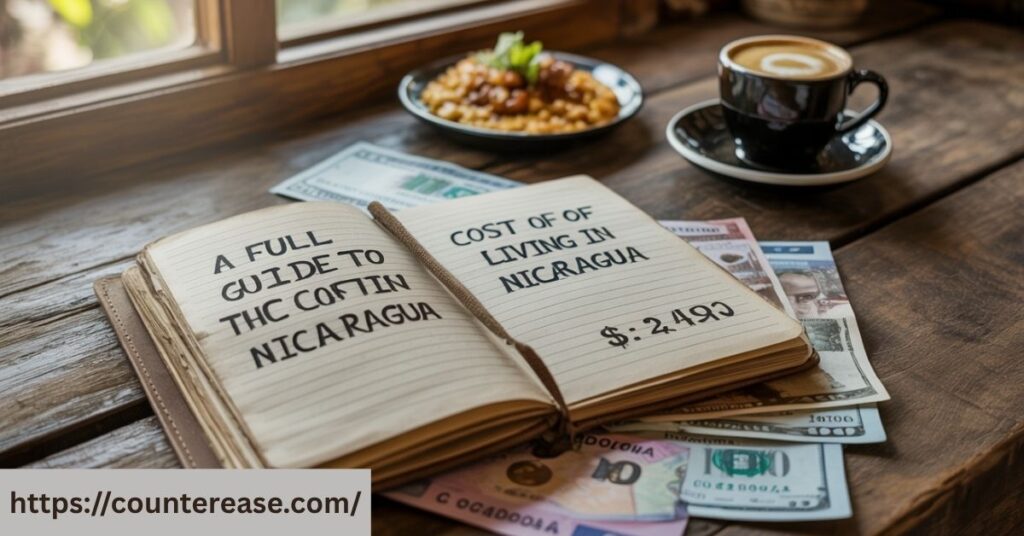
Public vs Private Healthcare
Public healthcare offers basic services to residents at minimal cost. However, waits are long, facilities are basic, and English speakers are rare.
Private healthcare costs more but provides:
- Shorter wait times for appointments and procedures
- Modern facilities with current equipment
- English-speaking staff in major hospitals
- International insurance acceptance
Medical Cost Comparisons
| Service | Public System | Private System | US Equivalent |
|---|---|---|---|
| General consultation | $5-10 | $25-40 | $200-300 |
| Dental cleaning | $15-25 | $30-50 | $150-250 |
| X-ray | $10-20 | $25-40 | $100-300 |
| Basic surgery | $200-500 | $800-2,000 | $5,000-15,000 |
Health insurance cost expats varies by coverage level:
- Basic local coverage: $30-60 monthly
- Comprehensive private: $80-150 monthly
- International coverage: $150-400 monthly
Prescription Medications
Pharmacy costs remain remarkably low. Many medications available over-the-counter cost 60-80% less than US equivalents.
Common medications pricing:
- Antibiotics: $5-15 per course
- Pain relievers: $2-8 per bottle
- Chronic condition drugs: Often 70-90% less than US prices
Entertainment and Social Life: Fun Without Breaking the Bank
Entertainment and leisure costs provide excellent value across Nicaragua’s diverse recreational landscape.
Nightlife and Social Activities
Local bars offer incredible drink prices:
- Local beer: $1-2 per bottle
- Cocktails: $3-6 at local establishments
- Wine: $15-25 per bottle (imported wines cost significantly more)
Expat hangouts in Granada and San Juan del Sur charge tourist prices:
- Import beer: $3-5 per bottle
- Cocktails: $6-12 depending on complexity
- Cover charges: $5-15 for live music venues
Beach and Outdoor Activities
Surfboard rental: $15-25 daily Fishing charters: $200-400 for full day (split among group) Volcano hiking tours: $25-50 per person including guide Beach club day passes: $10-25 with food/drink credits
Cultural and Social Costs
Museum admission: $2-5 for most attractions Live music venues: $3-10 cover charges Salsa dancing lessons: $5-15 per class Language exchange events: Usually free with drink purchase
Money-Saving Mastery: Insider Strategies That Work
Successful expats develop specific strategies for maximizing their budgets without sacrificing quality of life.
Negotiation Culture
Negotiate rent rates especially for long-term stays. Landlords often reduce prices for reliable tenants who pay several months upfront.
Bulk buying with other expats reduces per-unit costs on imported goods. Splitting cases of wine, specialty foods, or household items creates significant savings.
Seasonal Shopping Strategies
Tourist season (November-April) increases prices across all categories. Off-season living provides 20-40% savings on accommodation and activities.
Fruit and vegetable seasons affect market prices dramatically. Learning peak harvest times helps budget grocery expenses effectively.
Banking and Currency Optimization
ATM fees can drain budgets quickly at $3-5 per transaction. Using bank-affiliated ATMs reduces fees. Some expats maintain Nicaraguan bank accounts to eliminate international fees entirely.
US dollar acceptance eliminates currency exchange losses. Most major purchases accept dollars directly.
Real Expat Case Studies: Actual Budgets Revealed
Retiree Couple in Granada: John and Susan Miller
Ages: 67 and 64, retired from Michigan Location: Colonial house rental in Granada Duration: 3 years as permanent residents
Complete monthly breakdown:
| Category | Amount (USD) | Notes |
|---|---|---|
| House rental | $650 | 2BR colonial house, courtyard |
| Utilities | $85 | Electricity, water, internet, phone |
| Groceries | $180 | Mix of markets and supermarkets |
| Dining out | $120 | 2-3 restaurant meals weekly |
| Transportation | $40 | Taxis, occasional car rental |
| Healthcare | $150 | Private insurance plus medications |
| Entertainment | $80 | Cultural events, social activities |
| Household | $60 | Cleaning service, maintenance |
| Personal care | $45 | Haircuts, pharmacy items |
| Travel/misc | $90 | Weekend trips, unexpected expenses |
| TOTAL | $1,500 |
“We live better here on $1,500 than we did in Michigan on $4,000. The weather’s perfect, people are friendly, and our dollars stretch incredibly far. The colonial architecture and cultural richness make every day feel like vacation,” says Susan Miller.
Digital Nomad in San Juan del Sur: Maria Santos
Age: 28, freelance web developer from Spain Location: Shared house near beach Duration: 8 months working remotely
Monthly expense analysis:
| Expense | Cost (USD) | Details |
|---|---|---|
| Shared room | $280 | House with 3 other nomads |
| Food | $150 | Cooking + occasional restaurants |
| Internet | $45 | High-speed for video calls |
| Transportation | $35 | Motorcycle rental |
| Entertainment | $100 | Beach activities, nightlife |
| Phone | $25 | International plan |
| Miscellaneous | $65 | Supplies, unexpected costs |
| TOTAL | $700 |
“San Juan del Sur offers the perfect balance of beach lifestyle and digital infrastructure. My rent in Barcelona was $700 for a tiny room – here I get that price for my entire monthly budget while living 200 meters from perfect surf breaks,” Maria explains.
The Harsh Realities: What Other Guides Won’t Tell You
Infrastructure Limitations
Power outages occur regularly, especially during rainy season. You’ll need backup plans for work calls and charging devices.
Internet reliability varies dramatically. Even premium connections experience outages. Mobile hotspots provide essential backup.
Water shortages affect some areas during dry season. Backup water storage becomes necessary for daily activities.
Language Barrier Costs
Spanish fluency dramatically affects your expenses. Non-Spanish speakers pay “gringo tax” on everything from taxi rides to grocery shopping.
Translation services cost $20-50 hourly for important transactions like rental agreements or medical appointments.
See Also: The Best Areas and Places to Stay in Panama City, Panama
Import Restrictions and Costs
Electronics cost 30-50% more than US prices due to import taxes.
Specialty foods from home countries often cost 100-200% premiums when available.
Medication imports require prescriptions and often face customs delays.
Long-term Financial Planning: Nicaragua’s Economic Future
Currency and Economic Outlook
USD dependency creates stability for expats but makes Nicaragua vulnerable to US economic changes.
Inflation rates historically run 5-8% annually, manageable but requiring budget adjustments.
Real estate appreciation occurs slowly outside major tourist areas, limiting investment returns but keeping costs reasonable.
Political Risk Assessment
Government stability concerns remain following 2018 civil unrest. Most expats report normal daily life, but political tensions persist.
Tourism recovery progresses slowly, keeping competition for housing and services minimal.
Exit strategy planning becomes important given political uncertainties. Maintain flexibility in long-term commitments.
Is Nicaragua Right for Your Budget?
Nicaragua delivers exceptional value for cost-conscious expats willing to embrace adventure alongside affordability.
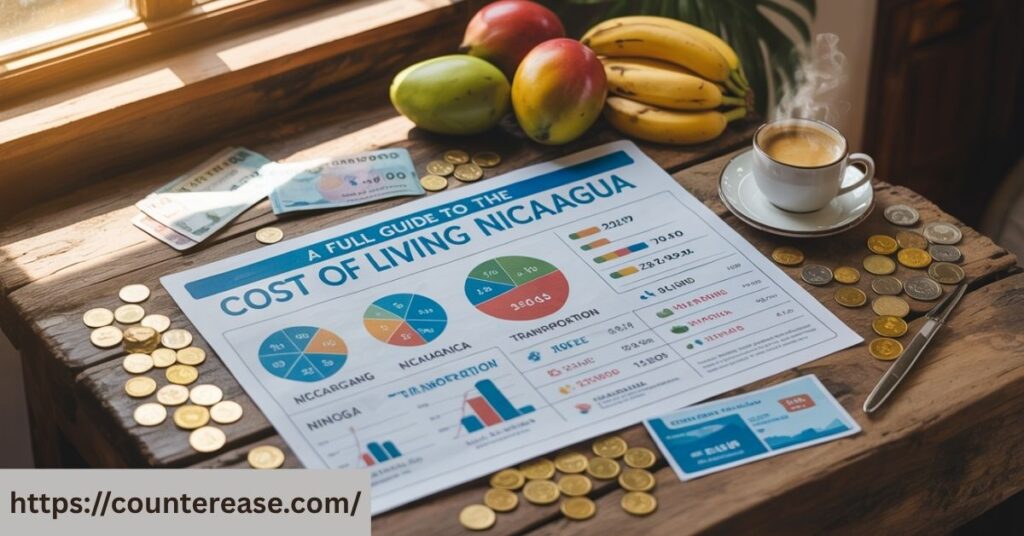
Minimum Income Requirements
Single person: $800-1,200 monthly provides comfortable lifestyle Couple: $1,200-1,800 monthly allows middle-class living Family: $1,800-2,500 monthly covers education and family activities
These amounts provide lifestyle quality equivalent to $40,000-80,000 annual incomes in major US cities.
Risk vs Reward Analysis
Benefits:
- Dramatic cost reductions without lifestyle sacrifice
- Year-round tropical climate
- Friendly, welcoming culture
- Adventure and exploration opportunities
- Strong expat communities for support
Challenges:
- Political uncertainty requiring flexibility
- Infrastructure limitations needing backup plans
- Language barriers affecting costs and integration
- Limited healthcare options for complex conditions
Success Factors
Thriving expats share common approaches:
- Learn Spanish for better integration and pricing
- Embrace local culture rather than recreating home lifestyle
- Build flexibility into plans for infrastructure challenges
- Maintain emergency funds for unexpected situations
- Connect with expat communities for support and advice
Nicaragua isn’t for everyone, but it rewards adventurous spirits with incredible value and authentic Central American experiences. Your money goes further while your horizons expand – that’s a combination worth serious consideration for budget-conscious expats seeking something different.
See Also: Everything About Guatemala Cit Airport: A Guide and FAQs
The average living expenses single person Nicaragua can be as low as $600-800 monthly for basic comfort, making it one of the most affordable expat destinations in the Americas. However, success requires realistic expectations, cultural openness, and smart financial planning.
FAQs
1. What is the monthly budget for a single person according to the cost-of-living-guide-nicaragua?
A single person can live well in Nicaragua on about $550–$600 per month, excluding rent for minimal local lifestyle.
2. How much does rent cost in the cost-of-living-guide-nicaragua?
A 1‑bedroom apartment in city centre runs $250–$340/month, while outside city centre it’s $230–$275/month.
3. What is the estimated food cost in the cost-of-living-guide-nicaragua?
Local groceries and simple meals typically cost $200–$300/month; eating at local restaurants costs about $2–$5/meal.
4. How cheap is transportation in the cost-of-living-guide-nicaragua?
Public bus fares run around $0.20–$0.28, and taxi rides typically cost $2–$3 for short city trips.
5. What are healthcare and insurance costs in the cost-of-living-guide-nicaragua?
Private doctor visits cost about $30–$50, and basic health insurance starts around $50–$80/month.
Conclusion
The cost-of-living-guide-nicaragua shows that life in Nicaragua is simple and affordable. You can rent a home, eat fresh food, and travel around the country without spending much. Many people enjoy a good lifestyle here on a small monthly budget. Whether you live in the city or by the beach, Nicaragua offers great value for your money.
By using this cost-of-living-guide-nicaragua, you can plan your budget wisely and avoid surprises. It helps you see what things really cost, from rent to daily meals. Nicaragua is a smart choice for students, expats, and retirees who want more for less. With low living costs and a relaxed way of life, it’s easy to feel at home here.

Asia Jenni is a passionate travel writer and expert author on CounterEase.com. With a deep love for exploration, she shares insightful travel guides, tips, and destination recommendations, helping travelers discover new places with ease. Her expertise in curating memorable trips and her engaging writing style make her a valuable resource for anyone looking to plan their next adventure.
